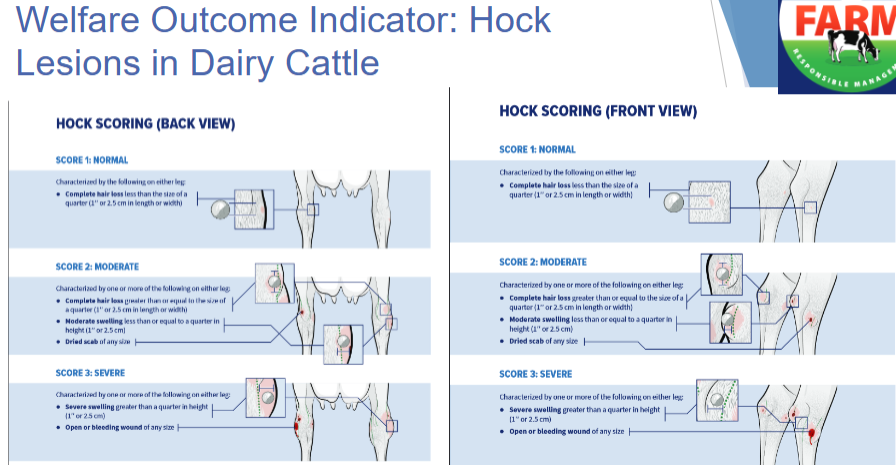(16) Animal Behavior: Welfare Assesment - Exam 2
1/43
There's no tags or description
Looks like no tags are added yet.
Name | Mastery | Learn | Test | Matching | Spaced |
|---|
No study sessions yet.
44 Terms
define animal welfare assessment
Measurement of the fundamental process of how an animal copes with its environment, including negative impacts
what is range of animal welfare assessment
poor to good
what should be measured in assessment
should be related back to what that animal is experiencing
A low body condition score says nothing about an animal’s welfare
However, considering that animal is in a persistent state of hunger, or weakness, or pain does
methods for assessing welfare
behavior measurements
physiological measurements
measurements of pain
measurements of negative feelings
evaluation of physical abnormalities
how to measure behavior objectively
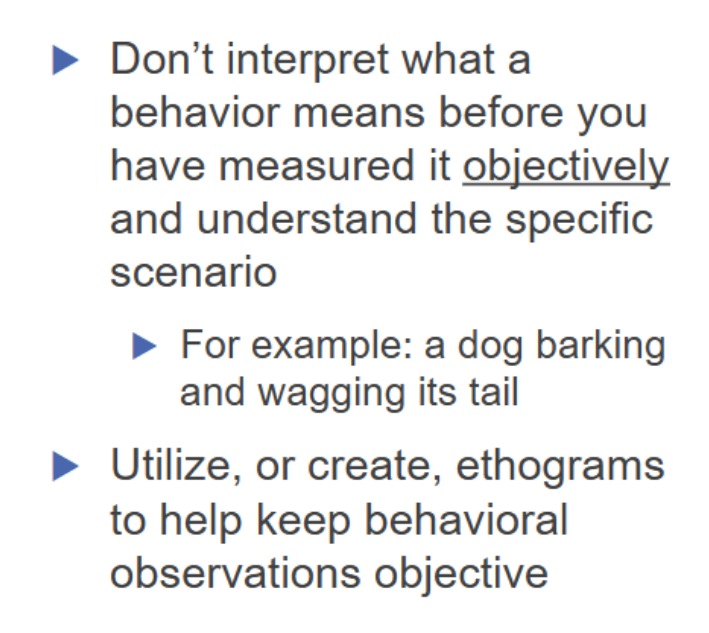
behavior recording tools
stopwatch & paper
video
audio
activity monitors
purpose of abnormal behaviors
effort to cope
indicator of total inability to cope
example of abnormal behaviors
avoidance
stereotypic behaviors
feather pecking
tail biting
self-mutilation
excessively aggressive behavior
what does inhibited behavior & behavioral strategies tell you
assesses what behaviors can & cannot be performed
examples of active and passive coping in social scenarios
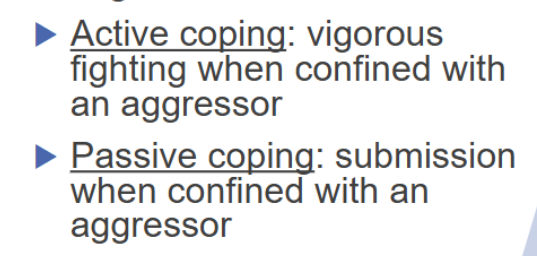
what occurs with inability to implement behavioral strategies
can affect animals ability to cope effectively
what is the easiest way to measure good welfare
behavioral measures
need to be taken in context and interpreted carefully
describe interpretation of tail wagging

describe interpretation of purring
can mean content or can mean pain
describe interpretation of anticipatory behavior

what can be beneficial when measuring good welfare?
preferences and strength of preferences
what are examples of preference tests
choice test
strength of preference
typesof choice test
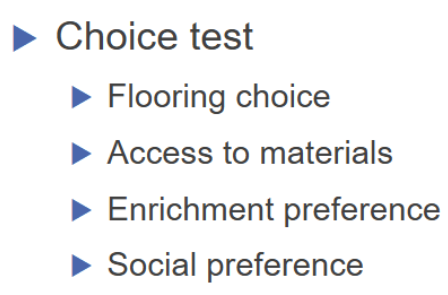
types of strength of preference tests

describe zebrafish social preference test
testing if zebrafish would rather be alone or with other zebrafish
when zebrafish released from center 3rd box it swims to find other zebrafish rather than being alone
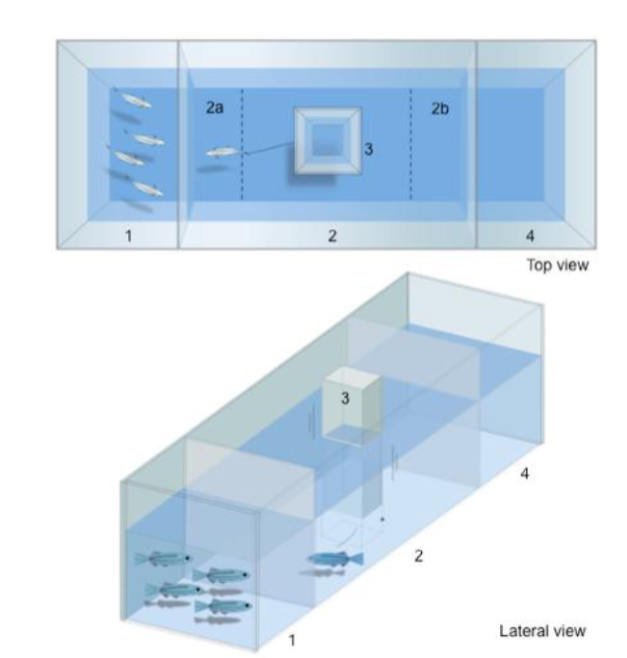
do cattle prefer pasture vs fresh feed (TMR)
pretty equal preference
what does cortisol/corticosterone and heart rate tell you as a physiological measurement
excitation
complicated: can be positive or negative excitation
what does glucose tell you as a physiological measurement
food deprivation
what doe neurotransmitters (substance P) tell you as a physiological measurement
pain
behavioral measurements of pain
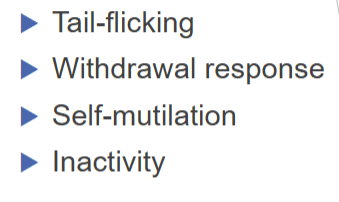
what are big differences in pain of prey and predator species
prey species less likely to show pain outwardly
physiological measures of pain
Nociceptor activity
Substance P – neurotransmitter present in mammals & fish
Facial grimace scales
what is facial grimace scale
Simplified & validated method for evaluating facial expressions specifically related to pain.
how does facial grimace scale assess pain?
motion and position of eyes, ears, cheeks
what animals can be assessed with facial grimace scale
mouse
rat
rabbit
sheep
ferret
cat
horse
what does mouse grimace scale focus on?
orbital tightening:
closing of eyelid (narrowing of orbital area)
wrinkle may be visible around eye
closing of eyelid indicates pain

what does equine grimace scale focus on?
orbital tightening
indicates pain when eyelid is partially or completely closed
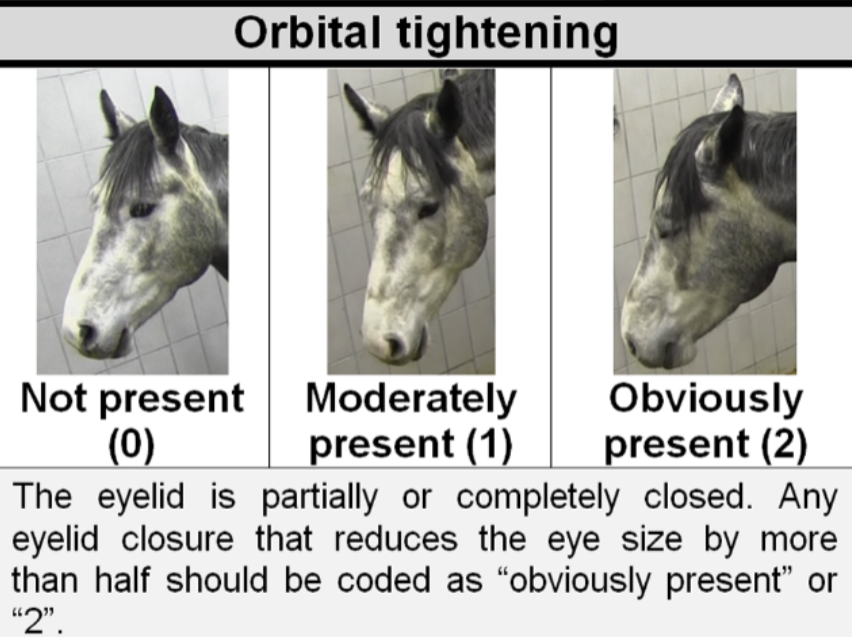
how can negative feelings be measured?
sensitivity to reward
presence/severity of stereotypies
cognitive bias
describe sensitivity to reward

can cognitive bias determine negative feelings alone?
no, useful but not enough alone
how can physical abnormalities be evaluated
welfare outcome indicators
can be scored using a rubric of % estimates
what are examples of the physical abnormalities
disease
injury
movement abnormaltiies
growth measures
describe welfare hock lesion scoring
score 1 normal: hair loss smaller than quarter
score 2 moderate: hair loss bigger than quarter, moderate swelling, dried scab
score 3 severe: severe swelling bigger than quarter, open/bleeding wound
